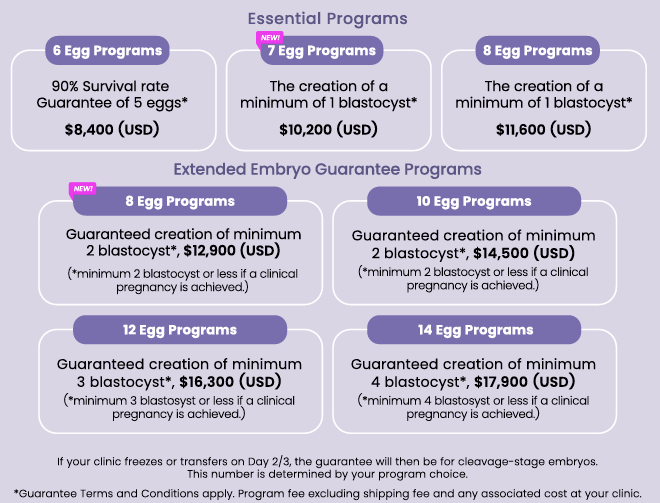Starting a family can be daunting, especially when facing fertility challenges like low sperm count. While it can make conceiving more difficult, it’s not impossible. With the right approach, lifestyle changes, and fertility treatments, many couples achieve their dream of parenthood.
Getting a low sperm count diagnosis can raise many questions about your chances of conceiving and what steps you can take. This blog will offer practical advice on how to get pregnant with a low sperm count.
What is a low sperm count?
A low sperm count, medically known as oligospermia, means there are fewer sperm in the semen than normal. According to the World Health Organization, a low sperm count is fewer than 15 million sperm per millilitre of semen or less than 39 million sperm in the entire ejaculate.
Sperm issues are more common than many people realise. About one in six couples have difficulty conceiving, with male infertility accounting for up to 50% of these cases.
Other common sperm problems include:
- Poor sperm motility – refers to the sperm’s ability to move.
- Abnormally shaped sperm – otherwise known as sperm morphology.
- Azoospermia – meaning that he doesn’t produce sperm at all.
- Sperm DNA fragmentation – these are lesions, damage or breaks in the genetic material of the sperm.
What causes a low sperm count?
Varicoceles
These are swollen veins in the scrotum that can disrupt blood flow and overheat the testes, reducing sperm production. They’re found in about 16% of men and 40% of men experiencing infertility.
Hormonal imbalances
Low levels of certain hormones from the pituitary gland can affect sperm growth.
Medications
Some medications used to treat anxiety, depression, infections, arthritis, digestive issues, high blood pressure, and cancer can impact sperm production and function. It’s important to discuss this with your doctor.
Infections
Infections, including some sexually transmitted diseases like gonorrhoea and inflammation of the testicles or epididymis can damage sperm production.
Genetic conditions
Disorders like cystic fibrosis or Klinefelter’s syndrome, where men have an extra X chromosome, can affect sperm count.
Testicular injuries
Since testicles are outside the body, they are more vulnerable to injury, which can create blockages and transportation issues, lowering sperm count.
Thyroid issues
Conditions like hyperthyroidism are linked to lower sperm counts.
Lifestyle choices
Factors like smoking, drug and alcohol use, stress, depression, obesity, and jobs that require long periods of sitting can all affect sperm production.
Environmental factors
Exposure to certain industrial chemicals and heavy metals can reduce sperm count.
Radiation therapy
Cancer treatments that involve radiation to the reproductive organs can also lower sperm count.
Signs of a low sperm count
The main symptom of oligospermia is infertility, so you may not experience any signs of low sperm quality until you try to have a baby. If there is an underlying condition that is causing your partner’s low sperm count, he may experience:
- A low sex drive.
- Erectile dysfunction.
- Swelling or pain in or around the testicles.
- Less facial or body hair.
- Testicular pain or swelling.
- Problems with ejaculation.
If you and your partner have been trying to conceive for a year without success, or if you experience any of the above symptoms, it’s important to consult a healthcare professional. For couples where the female partner is over 35, seek help after six months of trying.
Read: Poor egg quality: What you need to know.
Can I get pregnant if my partner has a low sperm count?
Yes, it is possible to get pregnant even if your partner has a low sperm count. However, it might take longer or require fertility treatment, depending on the diagnosis.
A low sperm count is a treatable cause of infertility, and many men with this condition can still conceive naturally. And don’t forget that factors such as sperm motility and morphology also play a crucial role in determining your chances of pregnancy.
How can we improve his sperm count?
Surgery
Surgery may be an option for men who have varicoceles, blockages, or issues with sperm leaving their bodies. Varicoceles can be corrected with minor outpatient surgery, and vasectomies can be reversed. Sperm can also be surgically retrieved for assisted reproduction procedures like IVF.
Medications
Medications can treat infections in the reproductive tract. However, if there is lasting tissue damage, sperm count might not fully recover – even with the proper treatment.
Counselling
Challenges with sexual intercourse, like erectile dysfunction or premature ejaculation, can often be managed with a mix of medication and counselling.
Hormone treatments
Addressing hormonal imbalances with medications can help restore fertility.
Lifestyle changes
Proper timing and healthy lifestyle changes can significantly improve sperm count over time. Here are a few lifestyle changes that can increase the chances of pregnancy:
- Increased sexual activity, especially around ovulation.
- Avoiding activities that raise testicle temperatures, such as hot tubs and saunas.
- Reduced drug and alcohol use.
What are the fertility treatments for a low sperm count?
If lifestyle changes and treatments do not help you conceive, fertility treatments like these are the next step.
ICSI – Intracytoplasmic Sperm Injection
This treatment involves injecting a healthy sperm directly into the egg for fertilisation. It is highly effective for overcoming low sperm count and other sperm issues.
IUI – Intrauterine Insemination
During ovulation, a processed specimen of highly motile sperm is placed through the cervix and deposited in the uterus. This treatment can help with mild sperm abnormalities or if there are erectile issues.
At Central Egg Bank, we understand the emotional and physical challenges of fertility treatments. For more fertility advice and guidance, read our informative blogs.

















